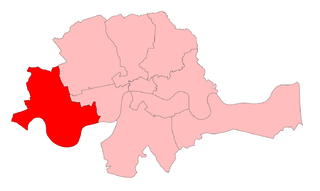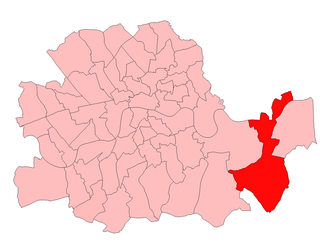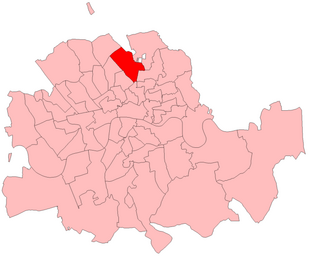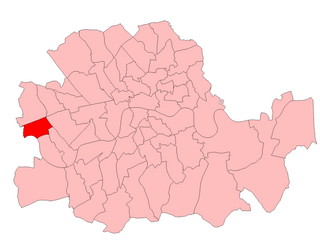
Liverpool Edge Hill was a borough constituency within the city and metropolitan borough of Liverpool, in the English county of Merseyside, centred on Edge Hill. It returned one Member of Parliament (MP) to the House of Commons of the Parliament of the United Kingdom, elected by the first-past-the-post voting system.

Chelsea was a borough constituency, represented in the House of Commons of the Parliament of the United Kingdom.
Dulwich was a borough constituency in the Dulwich area of South London, which returned one Member of Parliament (MP) to the House of Commons of the Parliament of the United Kingdom.

Woolwich East was a parliamentary constituency represented in the House of Commons of the Parliament of the United Kingdom from 1918 until 1983. Its seat was Woolwich, now in the Royal Borough of Greenwich in south-east London.

Woolwich West was a borough constituency represented in the House of Commons of the Parliament of the United Kingdom from 1918 until 1983. It centred on Eltham, now in the Royal Borough of Greenwich in south-east London.

Fulham was a borough constituency centred on the London district of Fulham. It was represented in the House of Commons of the Parliament of the United Kingdom from 1885 until 1918 and from 1955 to 1997.

Fulham West was a borough constituency based in the London district of Fulham. It was represented in the House of Commons of the Parliament of the United Kingdom from 1918 to 1955.
Barons Court was a constituency of the House of Commons of the Parliament of the United Kingdom from 1955 to 1974. It was represented by one Member of Parliament (MP), elected by the first-past-the-post system of election.

Islington East was a constituency which returned one Member of Parliament (MP) to the House of Commons of the Parliament of the United Kingdom from 1885, until it was abolished for the February 1974 general election.

Balham and Tooting was a constituency in South London, which returned one Member of Parliament (MP) to the House of Commons of the Parliament of the United Kingdom. It was created for the 1918 general election and abolished for the 1950 general election.
Hackney South was a parliamentary constituency in "The Metropolis". It was represented by nine Members of Parliament to the House of Commons of the Parliament of the United Kingdom, only two of whom, Horatio Bottomley and Herbert Morrison, were elected more than once.

Hackney Central was a borough constituency in what was then the Metropolitan Borough of Hackney, in London. It returned one Member of Parliament (MP) to the House of Commons of the Parliament of the United Kingdom.
Hammersmith North was a borough constituency in the Metropolitan Borough of Hammersmith in West London. It returned one Member of Parliament (MP) to the House of Commons of the Parliament of the United Kingdom, elected by the first past the post system.

Hammersmith South was a borough constituency in the Metropolitan Borough of Hammersmith in west London. It returned one Member of Parliament (MP) to the House of Commons of the Parliament of the United Kingdom, elected by the first-past-the-post system.
Wandsworth Central was a parliamentary constituency in the Wandsworth district of South London. It returned one Member of Parliament (MP) to the House of Commons of the Parliament of the United Kingdom, elected by the first-past-the-post voting system.
Leeds North was a borough constituency in the city of Leeds, West Yorkshire, which returned one Member of Parliament (MP) to the House of Commons of the Parliament of the United Kingdom, elected by the first past the post voting system.

SouthwarkNorth was a parliamentary constituency in the Metropolitan Borough of Southwark, in South London. It returned one Member of Parliament (MP) to the House of Commons of the Parliament of the United Kingdom.

SouthwarkSouth East was a parliamentary constituency in the Metropolitan Borough of Southwark, in South London. It returned one Member of Parliament (MP) to the House of Commons of the Parliament of the United Kingdom.

Limehouse was a borough constituency centred on the Limehouse district of the East End of London. It returned one Member of Parliament (MP) to the House of Commons of the Parliament of the United Kingdom.

Bow and Bromley was a constituency in the Parliament of the United Kingdom. Located in the Metropolitan Borough of Poplar in London, it was created by the Redistribution of Seats Act for the 1885 general election and returned one Member of Parliament (MP) until it was abolished for the 1950 general election.

















